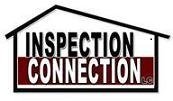Homeowners should take a 'whole house' approach March 2009
ARRA offers greater tax credits for energy efficient upgrades
Homeowners should take a ‘whole house’ approach
The American Recovery and Reinvestment Act of 2009, introduced as part of the federal government’s stimulus package in March, has made significant increases to IRS federal tax credits for existing home energy efficiency
upgrades.
The tax credit limit has been raised from 10 percent to 30 percent on qualifying improvements. Some tax credits that were for a specific dollar amount–for example, $300 for an energy efficient central air conditioning system have been converted to 30 percent of the total cost (no project money limit). The list of home improvement projects that may qualify for credits includes: • Windows and doors • Insulation • Geothermal heat pumps • Solar panels • Roofs • Solar water heaters • HVAC • Small wind energy systems • Fuel cells
Even with the help of these improved tax credits, most homeowners will need to budget for efficiency upgrades and will need to make informed decisions that impact home performance for the life of the residence. Fortunately, help is available in rating the cost effectiveness for these types of programs, as well as for insuring that important safety measures are considered.
Certified Home Energy Raters and Auditors have tools and training to implement a “whole house” approach in recommending residential weatherization and efficiency upgrades. Using a systematic inspection and testing process, a Home Energy Rater will determine a home’s current energy efficiency relative to a national standard(HERS rating score). With the information developed during this process, key efficiency problems are identified and ranked for impact on home performance. Estimated project costs are included and potential efficiency upgrade projects can be ranked based on the best utility savings per project investment.
A Home Energy Rating insures the best use of the homeowners efficiency upgrade investment dollar.
Homeowners interested in installing solar or wind- generating equipment can use a Home Energy Rating to determine required equipment capacities. The rating may reveal efficiency upgrade opportunities that will enhance the performance of “green” power-generating equipment or recommend changes to the home that will reduce the size and cost of equipment while still achieving desired results.
For specific IRS energy efficient tax credit details, visit www.energystar. gov/index.cfm?c=products.pr_tax_credits#chart.
More information on Home Energy Ratings is available at www.resnet.us or www.icenergyrate.com.
Miles Dyson is the owner of Inspection Connection LC - Professional Home Energy Rating and Home Inspection Services. For more information visit: https://www.InspectionConnectionTexas.com.
